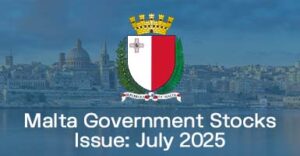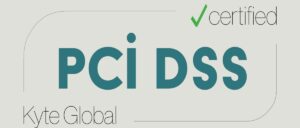Franklin Templeton’s Notes from the Trading Desk offers a weekly overview of what our professional traders and analysts are watching in the markets. As part of Templeton Global Investments Group, the European equity desk is manned by a team of professionals based in Edinburgh, Scotland, whose job it is to monitor the markets around the world. Their views are theirs alone and are not intended to be construed as investment advice.
The digest
Global equities closed higher overall last week, with central banks coming back into focus. The MSCI World Index closed the week up 0.4%, while regional performance was mixed, with the S&P 500 Index down 0.2%, the European Stoxx 600 Index up 1.6%, and the MSCI Asia Pacific Index up 1.8%. On Thursday, the European Central Bank (ECB) raised interest rates 25 basis points (bps)—a surprise to some observers. The latest US Consumer Price Index (CPI) report also garnered attention ahead of the upcoming Federal Reserve (Fed) meeting this Wednesday. Also in the United States, the Arm initial public offering (IPO) was a talking point as it debuted on the Nasdaq on Thursday and closed the day 25% higher than the IPO price.
Chinese data also helped sentiment on Friday, as industrial production and retail sales growth in August exceeded expectations. The People’s Bank of China (PBOC) cut the required reserve ratio (RRR) by 0.25%, which also helped market sentiment.
According to Bank of America’s latest “Flow Show” report, last week was the largest weekly net inflow for global equities since March 2022, at US$25.3 billion, as confidence in a US economic soft landing grows. US equities accounted for the vast majority of that net inflow, receiving US $26.4 billion. European equity funds suffered a further weekly outflow, making it 27 weeks in a row, shedding another US$1.4 billion. In other flows, money market funds have now received US$1trillion year-to-date, on course for record inflows in 2023. Treasuries are also on their longest inflow streak since 2010, now 31 weeks.
Central banks are back
ECB
The major central banks were back with a bang last week. The ECB was the first of the major banks to deliver its latest interest-rate decision. It felt like the first ECB rate decision of the year, which could have gone either way. Ultimately, the ECB raised rates 25 bps with a “solid majority” behind the hike. The focus for investors was on the lowering of inflation forecasts for 2024 and 2025 to 3.2% and 2.1% respectively, which finally aligns with the ECB’s long-term price stability goal. On its own, this suggests a pause in the current hiking cycle, as the bank seemingly views current rates as sufficiently restrictive. There was also a change in language in the central bank’s statement to say that rates have likely reached a level where, if maintained for a long period of time, inflation will be below target.
The current market consensus view is that this move marks the final ECB hike, which would conclude its most aggressive tightening cycle since the euro’s inception. That said, in her press conference, ECB President Christine Lagarde said that it isn’t possible to say if the move to 4% represents the final hike. However, she did note (again) that future decisions will be data-dependent, and as core inflation in the eurozone edges lower, this ultimately adds to the market view that rates are now at the peak where they could stay for an extended period. Thursday was the best day for the Stoxx 600 Index since March, as it closed the day up 1.5%.
There were a few points to note for the bears too. The ECB downgraded economic growth projections and noted the effects of higher interest rates as well as “the weakening international trade environment”. The eurozone is now expected to grow by just 0.7% in 2023 and 1.0% in 2024. Note, earlier in the week, the European Commission reduced its eurozone growth forecast, citing consumer demand challenges due to high inflation and Germany’s potential recession.
The ECB hawks were vocal on Friday, which drove a reversal in yields and tamed any market expectations of a rate cut by year-end. Lagarde noted that rate cuts were not on the Governing Council’s agenda, nor had they even been discussed. Bank of Slovenia Governor Bostjan Vasle reiterated Lagarde’s language in the press conference, saying that further rate hikes cannot be ruled out, as they will be dependent on data. Austria Central Bank Governor Robert Holzmann noted the latest hike may not be the last, whilst Estonia Central Bank Governor Madis Muller said there was a strong case to quicken the balance sheet roll-off. Finally, Central Bank of Latvia Governor Martins Kazaks stated that this latest announcement was not a “dovish hike” and that betting that the ECB would cut rates in the first half of next year would be a mistake.
In conclusion, it feels like the market is potentially getting ahead of itself with regards to ECB policy and leaves us open to a market shock in the months ahead.
PBOC
Last week the PBOC cut the RRR by 0.25%, a move which was expected, though with unclear timing. The RRR dictates how much cash Chinese banks must keep in reserve so, by cutting the rate, the PBOC is effectively increasing liquidity in the market. The move comes at a time when China’s economy is struggling to sustain a post-pandemic recovery. The PBOC also added a T+1 timescale on to the announcement, not seen since 2015, highlighting the urgency of this change.
Week ahead for central banks
Focus now shifts to the central bank announcements this week, which includes the Fed meeting on Wednesday, the Bank of England (BoE) and Swiss National Bank (SNB) on Thursday, followed by the Bank of Japan (BoJ) on Friday.
The expectation is that the Federal Open Market Committee (FOMC) will keep rates on hold at this latest meeting and maintain the target benchmark lending rate of 5.25%-5.5%. The August CPI report surprised slightly to the upside last week, with the core reading coming in at 0.3%, slightly higher than expected. Higher gasoline prices accounted for more than half of the increase. Also pointing to stronger prices, the August US Producer Price Index (PPI) also came in higher than expected at +0.7%. Further, US retail sales rose in August by 0.2%, which was better than expected. These datapoints indicate the US consumer remains resilient, making a soft-landing scenario more likely. Yet, the small increase on the CPI, as well as the latest PPI report, didn’t seem to be enough to shift the market view that the Fed would holding interest rates steady at this week’s meeting.
The BoE announcement on Thursday is likely to garner attention too. The market expects a 25 bp hike, taking the target rate to 5.5%. The market expectation is that this hike will likely mark the end of the latest hiking cycle. The previous comment from the Monetary Policy Committee that “the current monetary policy stance is restrictive” suggests the BoE recognises it is approaching the end of the current tightening cycle. However, the latest data appear to suggest that inflation will remain persistent in the United Kingdom, as the BoE/Ipsos inflation attitudes survey showed inflation expectations for the coming year rose to 3.6% in August from 3.5% in May.
Also on Thursday, the Swedish Riksbank is expected to hike a further 25 bps to 4%, given high underlying inflation. There is room for a surprise when the SNB announces, with the market pricing in a 65% chance that the SNB will raise rates again by 25 bps to a terminal rate of 2%.
On Friday, the Bank of Japan is expected to keep its monetary policy unchanged. The focus will be on Governor Ueda’s press conference and any signals he offers on the Japanese yen. Given uncertainty in the currency market, Ueda could be forced to assume a more hawkish stance, driven by uncertainty over whether the Fed is done hiking for now.
Week in review
Europe
European equities received a shot in the arm on Thursday with the ECB’s “dovish hike”. Looking at sectors, basic resources stocks outperformed amidst the PBOC RRR cut, with iron ore prices rising to five-month highs. Insurers and bank stocks also outperformed on the back of yield moves. Luxury stocks were also in focus last week, rebounding to finish higher on the week. Technology stocks struggled last week, with the sector finishing the week lower as US/China “tech wars” reared up again. Also, a Reuters report that TSMC has asked major suppliers to delay shipments of high-end chipmaking equipment weighed on sentiment further.
In the United Kingdom, July employment data caught attention. Wages rose more than expected, but the market was focused on the more benign 4.3% unemployment number, which did briefly give weight to the BoE pause argument. Then, on Wednesday, July’s disappointing gross domestic product (GDP) reading (drop of 0.5%) caused a sterling selloff. Finally, the closely-watched RICS House Price Balance—the key measure of housing prices in the United Kingdom—came out on Thursday at its lowest reading since 2009, which shows how surging mortgage rates have weighed on the sector.
United States
US indices were uninspiring last week, with the S&P 500 Index down a mere 0.2%. The moves were equally muted in other benchmarks, with the Dow Jones Industrial Average up 0.1% and the Nasdaq 100 Index down 0.5%.
Investor focus was clearly on the upcoming Fed interest-rate decision, so it was not surprising the US CPI print was the main talking point of the week, as discussed above. Aside from that, the news that approximately 150,000 US United Auto Workers at the “Big Three” auto manufacturers were going on strike was a talking point. The union is asking for wage increases of around 36% over the next four years. If prolonged, these strikes could become a headwind for the US economy, significantly impacting auto production, manufacturing activity, and the September employment report. It could potentially limit new car production and push-up prices for used vehicles, in turn impacting inflation.
A continued rise in crude oil prices is another unhelpful development from an inflationary perspective—with both brent and West Texas Intermediate crude oil hitting year-to-date highs last week. The strength is tied to OPEC+ supply cuts, driven by Russia and Saudi Arabia. This week, the markets will be paying attention to Saudi Energy Minister Prince Abdulaziz bin Salman’s speech at an industry conference this week.
Looking to macro data, inflation data was in focus last week, with US August PPI rising by 0.7% month-over-month, and the core rate rising by 0.3%. August retail sales (excluding gasoline) rose 0.2%, while the September Empire manufacturing index rose to 1.9.
Investor sentiment appears to reflect the muted market performance of late. The CNN Fear & Greed Index has a “Neutral” reading, as it did last week and a month ago— suggesting conviction is lacking. That said, the monthly BofA Fund Manager Survey came out last week and reflected improving sentiment on US equities. The survey showed a 29-point jump in US equity allocations to overweight for the first time since August 2022.
Asia
Last week was a better week overall in Asia, with the MSCI Asia Pacific closing up a solid 1.83%.
Data overall signalled that the Chinese government‘s efforts to kick start the economy are starting to pay off to a certain degree.
This week’s focus will be on the developed markets’ central bank meetings as noted, which will likely help set the tone for Asia-Pacific market action.
Geopolitical developments/relations are likely to remain in focus next week too as the 78th United Nations General Assembly kicks off on Tuesday.
Japan
Last week was a good one for Japan, with the Nikkei closing the week up 2.84%, and all 33 sectors in the green, due mainly to better economic data out of China, stronger US markets and a weaker Japanese yen (good for exporters).
Refiners and mining stocks were strong performers on the back of rising oil prices.
Unsurprisingly, speculation about monetary policy normalisation weighed heavily on Japanese government bonds (JGBs), sending the yield on the 10-year JGB to 0.70%, the highest since 2013.
Volumes were elevated on the back of the FTSE rebalance on Friday; otherwise, investors are still in “wait-and-see” mode before the Fed and BoJ meetings this week.
Prime Minister Kishida reshuffled his cabinet this week, but no great surprises. He also reiterated the government’s commitment to subsidise petrol prices and to ensure that wage growth exceeds the rate of inflation, and that Japan is fully out of deflation.
China
The Shanghai Composite closed last week slightly in the green, up 0.03%.
The week was very data-intensive, with most of it providing evidence of economic stabilisation in the country. The latest inflation readings provided more evidence that the worst may be over for China’s slowing economy.
The PBOC announced its second 25 bp RRR cut, while it kept the Medium Term Lending Facility (MLF) rate unchanged at 2.5%.
Sector-wise, medical stocks outperformed on reports that several academic conferences will be held in September, giving hope for some normalisation, after the anti-corruption campaign weighed on the sector.
Coal stocks also rallied as investors sought more exposure unrelated to property, and oil stocks were higher amidst gains in global crude oil prices.
Looking ahead, the Loan Prime Rate (LPR) will be out on 20 September, with the market expecting no change for Hong Kong.
Hong Kong
The Hang Seng closed last week just mildly in the red, down 0.11%, thanks to a rally on Friday after the PBoC cut banks’ RRR for a second time to try to inject more liquidity into the system, and better-than-expected macro data gave hope for the nation’s economic recovery.
Electric vehicle (EV) makers were in focus, as the European Union launched an anti-subsidy probe into Chinese EVs, claiming Chinese EV prices are kept artificially low.
Shares of energy stocks advanced.
Chinese developers were mostly higher after Country Garden won a vote to extend repayment of seven Chinese yuan bonds, though the company faces another deadline for a bondholders’ vote on its request to extend repayment.
Week ahead
Euro key events
Tuesday 19 September: Euro-area Final CPI Inflation
Wednesday 20 September: Fed meeting and interest-rate Decision; UK CPI Inflation
Thursday 21 September Riksbank policy rate decision; SNB meeting and policy rate decision; BoE meeting and policy rate decision; Eurozone Consumer Confidence
Friday 22 September: BoJ meeting and interest-rate decision; UK Retail Sales; Euro-Area Flash Composite PMI; S&P Global/CIPS UK Services PMI
Monday 18 September
- US Housing Market Index
- US Total net TIC flows
Tuesday 19 September
- Switzerland Swiss Watch Exports
- Eurozone ECB Current Account
- Italy Current Account Balance
- Eurozone CPI
- US Housing starts
- US State employment
- Japan trade balance
Wednesday 20 September
- UK CPI & RPI
- Germany PPI
- Eurozone Construction Output & EU27 New Car Registrations
- Sweden Unemployment Rate
- US FOMC statement & projections
Thursday 21 September
- Netherlands Unemployment Rate
- UK Public Finances (PSNCR); Bank of England Bank Rate
- France Business & Manufacturing Confidence
- Spain Trade Balance
- Eurozone Consumer Confidence
- Riksbank Policy Rate Decision
- Swiss National Bank Policy Rate
- US Current Account
- Japan CPI; PMI-Manufacturing
Friday 22 September
- Netherlands GDP
- UK Retail sales Inc Auto Fuel; S&P Global/CIPS UK Services PMI
- Spain GDP
- Germany HCOB Manufacturing & Services PMI
- Eurozone HCOB Manufacturing & Services PMI
- US S&P/Markit Manufacturing & Services PMI
- Japan BOJ rate decision
Franklin Templeton Key risks & Disclaimers:
What Are the Risks?
All investments involve risks, including the possible loss of principal. The value of investments can go down as well as up, and investors may not get back the full amount invested. Stock prices fluctuate, sometimes rapidly and dramatically, due to factors affecting individual companies, particular industries or sectors, or general market conditions. Bond prices generally move in the opposite direction of interest rates. Thus, as prices of bonds in an investment portfolio adjust to a rise in interest rates, the value of the portfolio may decline. Investments in foreign securities involve special risks including currency fluctuations, economic instability and political developments. Investments in developing markets involve heightened risks related to the same factors, in addition to those associated with their relatively small size and lesser liquidity.
Any companies and/or case studies referenced herein are used solely for illustrative purposes; any investment may or may not be currently held by any portfolio advised by Franklin Templeton. The information provided is not a recommendation or individual investment advice for any particular security, strategy, or investment product and is not an indication of the trading intent of any Franklin Templeton managed portfolio.
Past performance is not an indicator or guarantee of future performance. There is no assurance that any estimate, forecast or projection will be realised.
This article reflects the analysis and opinions of Franklin Templeton’s European Trading Desk as of 18th September 2023, and may vary from the analysis and opinions of other investment teams, platforms, portfolio managers or strategies at Franklin Templeton. Because market and economic conditions are often subject to rapid change, the analysis and opinions provided may change without notice. An assessment of a particular country, market, region, security, investment or strategy is not intended as an investment recommendation, nor does it constitute investment advice. Statements of fact are from sources considered reliable, but no representation or warranty is made as to their completeness or accuracy. This article does not provide a complete analysis of every material fact regarding any country, region, market, industry or security. Nothing in this document may be relied upon as investment advice or an investment recommendation. The companies named herein are used solely for illustrative purposes; any investment may or may not be currently held by any portfolio advised by Franklin Templeton. Data from third-party sources may have been used in the preparation of this material and Franklin Templeton (“FT”) has not independently verified, validated or audited such data. FT accepts no liability whatsoever for any loss arising from use of this information and reliance upon the comments, opinions and analyses in the material is at the sole discretion of the user. Products, services and information may not be available in all jurisdictions and are offered by FT affiliates and/or their distributors as local laws and regulations permit. Please consult your own professional adviser for further information on availability of products and services in your jurisdiction.
Issued by Franklin Templeton Investment Management Limited (FTIML) Registered office: Cannon Place, 78 Cannon Street, London EC4N 6HL. FTIML is authorised and regulated by the Financial Conduct Authority.
MeDirect Disclaimers:
This information has been accurately reproduced, as received from Franklin Templeton Investment Management Limited (FTIML). No information has been omitted which would render the reproduced information inaccurate or misleading. This information is being distributed by MeDirect Bank (Malta) plc to its customers. The information contained in this document is for general information purposes only and is not intended to provide legal or other professional advice nor does it commit MeDirect Bank (Malta) plc to any obligation whatsoever. The information available in this document is not intended to be a suggestion, recommendation or solicitation to buy, hold or sell, any securities and is not guaranteed as to accuracy or completeness.
The financial instruments discussed in the document may not be suitable for all investors and investors must make their own informed decisions and seek their own advice regarding the appropriateness of investing in financial instruments or implementing strategies discussed herein.
If you invest in this product you may lose some or all of the money you invest. The value of your investment may go down as well as up. A commission or sales fee may be charged at the time of the initial purchase for an investment. Any income you get from this investment may go down as well as up. This product may be affected by changes in currency exchange rate movements thereby affecting your investment return therefrom. The performance figures quoted refer to the past and past performance is not a guarantee of future performance or a reliable guide to future performance. Any decision to invest in a mutual fund should always be based upon the details contained in the Prospectus and Key Information Document (KID), which may be obtained from MeDirect Bank (Malta) plc.





